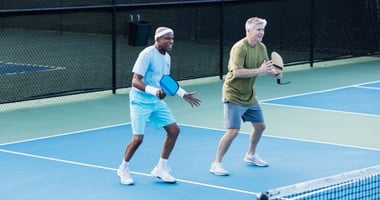How Dry Needling Works to Alleviate Pain and Conditions that can be Treated Dry needling is a...
Understanding Dry Needling
Explore how dry needling can be a game-changer in your battle against chronic pain, offering quick relief when you need it most.
Understanding Dry Needling and Its Origins
Dry needling is a skilled technique performed by a physical therapist or other licensed practitioner using filiform needles to penetrate the skin and/or underlying tissues to facilitate change in body structures and function. The needles utilized are the same as those used in Traditional Chinese Medicine acupuncture; however, that is where the similarities between Dry Needling and Acupuncture end, as the underlying theories are quite different.
While acupuncture is based on the concept of balancing energy flow through meridians, dry needling focuses on targeting trigger points associated with neuromusculoskeletal pain and dysfunction. Modern dry needling has developed on the foundation of modern Western medicine, which consists of biology, chemistry and physics. Traditional Chinese medicine beliefs are different from modern medicine and do not obey modern scientific laws that employ the scientific method and allow for the evolution of theories as new information comes to light. Dry needling is dynamically advancing as more evidence comes forth, while traditional Chinese medicine laws have remained the same for 2500 years; any new information has to fit into the original paradigm created by human-formed historical concepts, rather than natural law, in the traditional Chinese medicine framework.
Dry needling has gained popularity in recent years as a non-pharmacological approach to pain management. Current research and clinical data has modified the hypothesis and clinical techniques of modern dry needling, resulting in Neurologic Dry Needling (NDN). Dry needling allows for the evaluation and management of neuromusculoskeletal conditions, pain, movement impairments, and disability both locally and systemically. Dry needling is effective in reducing tissue tension or treating trigger points that cause soft tissue dysfunction. Soft tissue dysfunction may include tissue inflammation, sensitized nerve tissue, scar tissue formation, tissue adhesion, and deficiency of blood and lymphatic circulation. Dry Needling also improves microcirculation, and normalizing physiologic processes. Effects can be local, segmental, or systemic because it allows for the restoration of local tissue homeostasis as well as systemic homeostasis. Homeostasis refers to a stable and constant internal balance in the body, despite changes in external conditions.
To be clear, both neurologic dry needling and traditional Chinese medicine acupuncture can be clinically effective when applied appropriately, but the ability of dry needling theory and clinical application to evolve as medicine is ultimately what separates it out from traditional Chinese medicine’s more stagnant historical paradigm.





